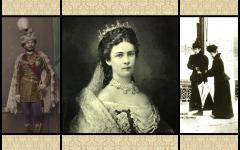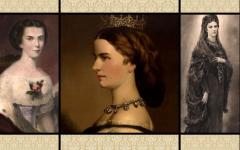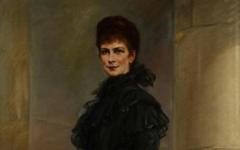QUEEN ELISABETH’S HUNGARIAN COMPANIONS PART 1 Lili Hunyady and Ida Ferenczy
It is obvious that Sisi felt attracted to the Hungarians since she had chosen Hungarian ladies-in-waiting since the early 1860s, who accompanied her not only to Vienna but also to her journeys. Ida Ferenczy, the Hungarian noble lady was her confidant and one of her closest friends. The Hungarian Countess Mary Festetics was also a beloved friend and a lady-in-waiting of her - her diary serves as a major source for biographers. A Hungarian woman, another maid of honour, Countess Irma Sztáray was next to her during Elisabeth’s latter years and when she was assassinated in 1898, and then years later completed a memoir about the Queen. The memoirs of the two above-mentioned countesses (Mary Festetics and Irma Sztáray) are detailed and authentic. Several other Hungarian ladies-in-waiting could be mentioned, however, in this article I would only like to talk about two ones: Her very first lady-in-waiting and confident, Countess Lili (Caroline) Hunyady and her life-long one, Ida Ferenczy, the Hungarian noblewoman.
Elisabeth Franz Schrotzberg 1854 by Franz Schrotzberg around 1854
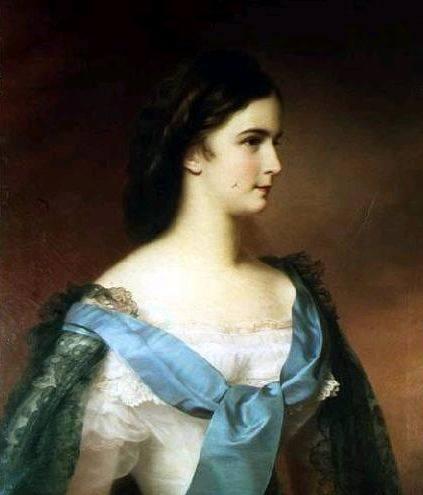
Her Majesty’s first Hungarian lady-in-waiting: Countess Lili Hunyady
The first woman who taught Elisabeth a few Hungarian words was Rudolf’s Hungarian wet nurse. Then later, in Madeira, where she stayed from November 1860, she learnt from Count Imre Hunyady, who became one of her great admirers. Here Sisi met Imre’s sister, Lili, who was at her age. Countess Hunyady was born on 26 December 1836, one year earlier than Elisabeth (24 December 1837). Soon she became Elisabeth’s very first Hungarian lady-in-waiting. Brigitte Hamann writes that Elisabeth “made no secret of this attachment, in that she preferred Lili’s company to any other, neglecting the other ladies” (128). Elisabeth had a very close friendship with Lili for several years (Lili left her duty when she got married in 1871). Unfortunately, we have not had much information about their relationship so far. However, we have a great amount of information about Elisabeth’s friendship with Ida Ferenczy.
Countess Lili Hunyady, Sisi's first Hungarian Lady-in-waiting
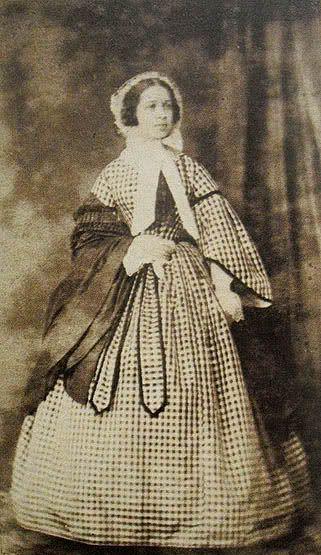
Ida Ferenczy, the Queen's conversationalist
Elisabeth had a heartfelt relationship with Ida Ferenczy, which kept for a lifetime. Ida got into the Viennese court under special circumstances in 1864. The Empress had wanted to improve her Hungarian language knowledge that was why she decided to take a Hungarian conversationalist. Of course, only countesses could be her ladies-in-waiting, and were recommended to her, however, somebody wrote Ida’s name onto the bottom of the list, which originally bore the names of six Hungarian noblewomen. Ida Ferenczy’s name written in a different handwriting aroused Elisabeth’s curiosity, and she chose her to meet. We had only guesses who added the young country girl’s name on the list, it might be a mystery forever. Sisi found her likeable even during their very first meeting and took her into her most immediate circle. Ida, who came from a gentry family, was two years younger than Elisabeth. She could not be the lady-in-waiting of the Empress because she did not belong to the aristocracy that was way she got a title of “Frau” then she was appointed officially Her Majesty’s reader. (Ida did not have to read for the Empress, though.)
Ida Ferenczy came from Kecskemét, which is a country town on the Great Plain of Hungary. She was from a gentry family - she belonged to the nobility but not to the upper class. Ida became Sisi’s confidant and best friend in quite a short time. They changed many letters in Hungarian, one can read some of them in the book of Mária Tolnay Kiss “Kedves Idám – Leveleskönyv”, in English: My Dear Ida – A Letter Book. Unfortunately, it has not been translated into English. It was published in Hungarian since the letters were originally written in Hungarian (it can be bought in the Royal Palace of Gödöllő). In Gödöllő, the two rooms of Ida were located right next to the Queen’s suite. Needless to say, in the Viennese Hofburg and Schönbrunn Palace, it would not have been possible because of the etiquette since Ida came “only” from a gentry family. Of course, it also shows that in Gödöllő, everything could be done the way Elisabeth wanted.
Ida Ferenczy
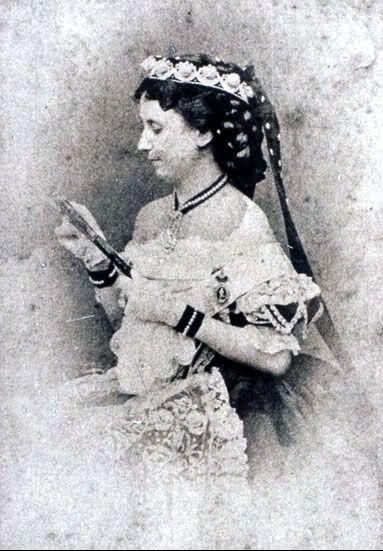
Ida Ferenczy, Count Gyula Andrássy and the way to the Austro-Hungarian Compromise
Their relationship was very important as regards the reconciliation and the Austro-Hungarian Compromise of 1867. Especially Count Gyula Andrássy and Ferenc Deák were the ones who exploited Ida for their own purposes in order to reach a compromise between the Habsburgs and the Hungarians. The young girl spoke a lot about her homeland, which Sisi was very interested in. She also must have felt a kind of special attraction to a nation which was hated by her mother-in-law.
Ida and Elisabeth used the Hungarian language as a secret code between themselves in the court. Ida had no family ties to the high aristocracy of the Imperial court and was very faithful to the Empress, so she stayed far away from the gossips (the women at court belonging to the Viennese aristocracy liked gossiping about everything and everybody, including the Empress herself). After only some weeks that Ida had arrived in Vienna, Countess Almássy (a Hungarian lady-in-waiting of Sisi) wrote to Hungary: “Ida is delighted with the Empress’ good pronunciation, she is also said to speak Hungarian quite fluently - in a word, they are both pleased with each other.” (Quoted by Hamann, 147) Ida spoke about the Hungarians, towards whom Elisabeth felt a great sympathy, a lot, and her role in the Reconciliation was crucial and determining. Read more about the Hungarian Compromise here.
Elisabeth and Andrássy met in Vienna for the first time in January 1866, when the Count was a member of the Hungarian parliamentary delegation, which invited the Empress to Hungary. Count Corti’s biography about Elisabeth, which was first published in 1935, suggests that all the members of the delegate looked wonderfully in their Hungarian clothes. However, Sisi caught sight of the tall and handsome Count Andrássy, who was fascinated by his Empress. Elisabeth was wearing a charming and richly decorated Hungarian dress with a white silk lace apron. Her head was covered by a traditional Hungarian lace bonnet, on which a diamond crown was sparkling. Her pretty lovely face was rosy from the excitement about the delegation of a country she was attracted by. She replied to the invitation in Hungarian, which amazed every delegate even if she still had a strong accent. Read more: Love or friendship?
Count Gyula Andrássy by Gyula Benczúr (1884), Empress and Queen Elisabeth by Bertalan Karlovszky
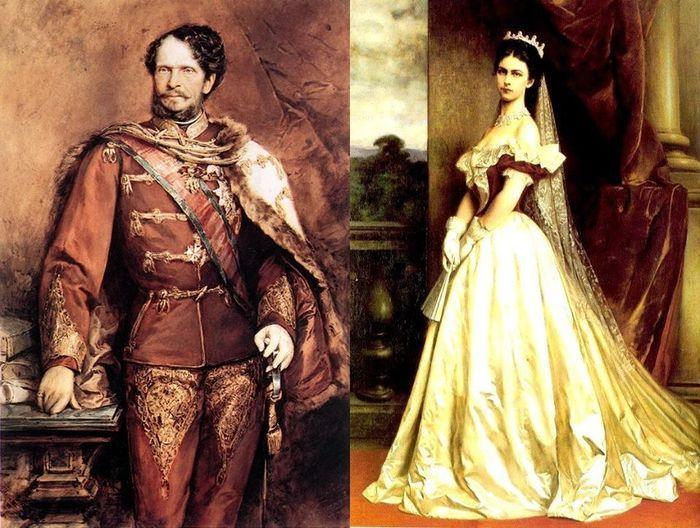
Elisabeth’s letters to Ida
Ida refused to get married so as to devote her life to her Queen. When Elisabeth was travelling, Ida could not go with her due to her (Ida’s) weak health. But as mentioned above, the Hungarian woman escorted her Queen to Hungary. When not being close to each other, the two women corresponded. Below I will quote some lines of the two women’s letters (the first one quoted by Hamann, and the other ones were translated by me due to they have been published only in Hungarian in the above-mentioned book.)
“Sisi’s letters to Ida, filled with tenderness, are usually headed by the address (in Hungarian), ‘My Dear Ida!’ The letters are exceedingly long (to her husband, for example, Sisi wrote much shorter and usually soberer notes) and contain such remarkable sentences as ‘I think of you so much, during the long hairdressing, during my walks, and a thousand times a day.’” (Quoted by Brigitte Hamann, The Reluctant Empress, 146)
“I got your letter today morning, and I am very very glad that you are fine. I am not worried anymore, and I think of the future much calmly. I am so enormously glad when thinking of the moment when I will see you again at last and you tell me everything word by word...” (written by Elisabeth to Ida between 17-18 July 1865)
“On 9 September I tend to be in Schönbrunn, where I will happily meet you.” (written by Elisabeth to Ida on 21 August 1868)
The Reader’s Room belonging to the Empress’ suite in the Royal Palace of Gödöllő © Royal Palace of Gödöllő
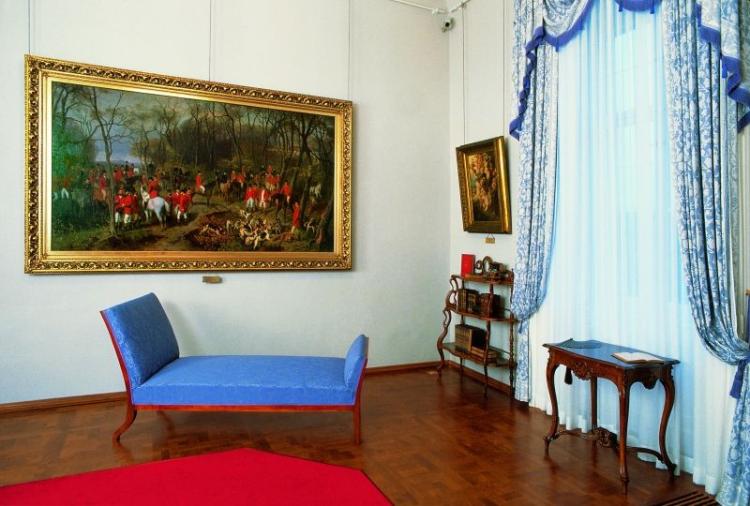
Elisabeth often suffered from insomnia, and Ida usually was sitting next to her bed this time telling the Queen different stories and memories. (Ida was also usually with Sisi during the time devoted to her hair - when it was combed and washed.) The following letter was written by Sisi to Ida when being with her daughter, Valerie and some of her Bavarian family members in Garatshausen on 9 July 1869:
“I am missing our long conversations in the purple room very much; we had such a lot of fan, however, we live different times now. You would be surprised! But you are the one who knows the best even when you are not here. There is nobody who makes me fall asleep, and I find it really so difficult to do so in the evening, but I go to sleep quite early.”
Let us see a letter from 1876. Elisabeth wrote these lines to Ida when she took part in coursings (the sport of hunting game animals such as hares with greyhounds) on 26 March. Ida was in Vienna then (she had a flat in the Viennese Hofburg). If one reads the Hungarian letters of the Queen, can see that by this time Sisi could write (and speak) the Hungarian language perfectly. One can feel from the lines that the Queen reprehended Ida for not having written to her for several days, and from these lines, it also follows that the two women quite frequently (more times a week) changed letters:
“You must have been surprised that I had not written, but it was really impossible, I had no peaceful minutes; and I also thought that you had so much fun (...) that you would not have time to read letters. That you have not had much time to write a lot, I experienced. Have not you been surprised that it has been already a week?”
Only some letters (and mostly fragments) of Elisabeth to Ida survived because the faithful Ida burned most of them before her own death, we suppose that the most significant ones. She died 30 years later than her Queen. Ida was born on 7 April 1839, Kecskemét and died on 28 June 1928.
Ida Ferenczy wearing a Hungarian gown in the year of the Millennium 1896
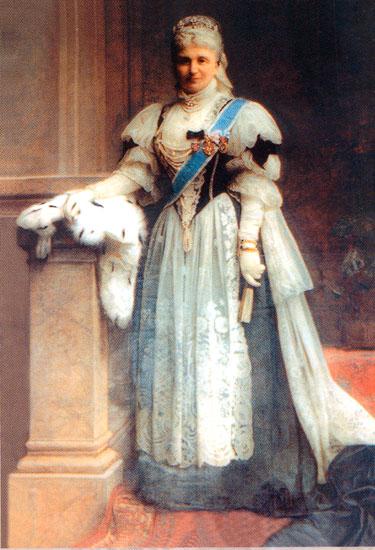
Queen Elisabeth Memorial in Buda Palace
After Elisabeth’s death, Ida Ferenczy and the Queen’s two daughters, Archduchess Gisela and Archduchess Marie Valerie were changing letters a lot. All the three women took part in the establishment of the Queen Elisabeth Memorial in Buda Palace, Hungary. Most of the exhibited relics were donated to the museum by Ida Ferenczy, but Gisela and Marie Valerie also gave several objects which had belonged to the Queen. The museum was opened on 15th January 1908, however, during the Second World War it was destroyed and only a few of the exhibited relics survived, which are now owned by the Hungarian National Museum.
The Large Room of the Queen Elisabeth Memorial in Buda Palace Source: OSZK EPA
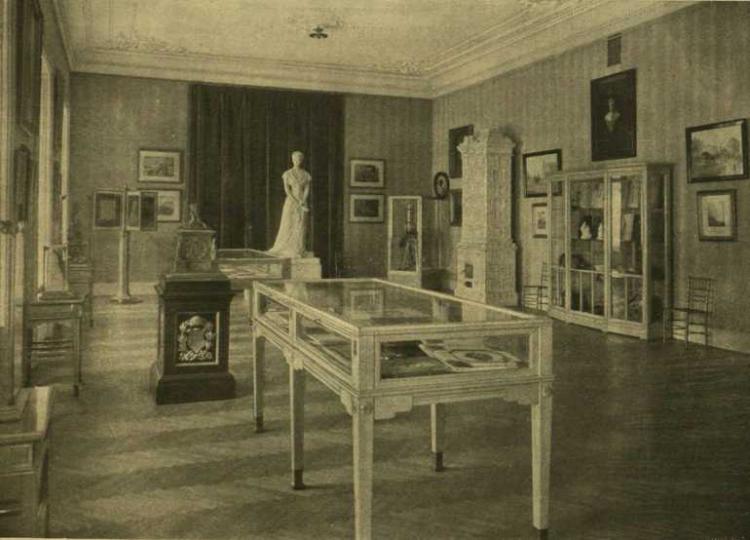
MAGYARUL: Sisi magyar barátnői
INDEXBrigitte Hamann: The Reluctant EmpressGróf Corti Egon: Erzsébet. Révai Kadás, Budapest, 1935Tolnayné Kiss Mária: Kedves Idám! LeveleskönyvTolnayné Kiss Mária: Erzsébet királyné és a magyar nyelv - Királyi KastélyMária Tolnay Kiss “Kedves Idám – Leveleskönyv” (In English: My Dear Ida – A Letter Book)

